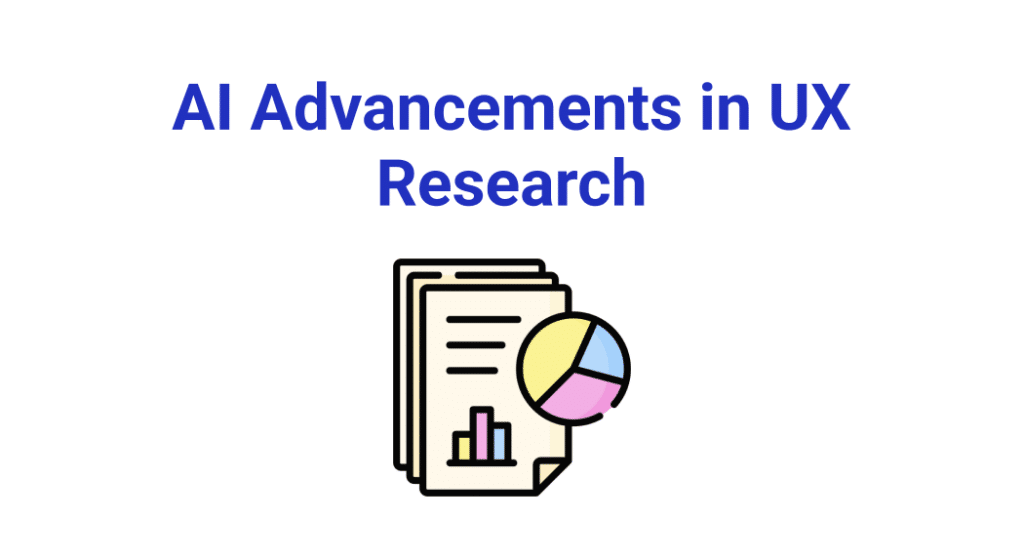In the ever-evolving landscape of technology, artificial intelligence (AI) has emerged as a game-changer, influencing various sectors including the field of User Experience (UX) research. With its ability to analyze vast amounts of data, AI recognizes patterns and makes predictions. As a result, this tool has started to play a pivotal role in shaping the future of UX research.
UX research, at its core, is about understanding user behavior, needs, and motivations to improve the usability and functionality of products. Traditionally, this process involved manual data collection and analysis, often requiring significant time and resources. However, the advent of AI has brought about a transformative shift in this process.
AI in UX research is not just about automation but also about enhancing the quality of insights derived from the research. It allows researchers to delve deeper into user behavior, streamline processes, and deliver enhanced user experiences. AI-powered tools can automate various aspects of user testing, making it more efficient and scalable.
These researchers can quickly examine large volumes of user data, enabling faster testing cycles and accelerating product development. Moreover, AI can help in identifying patterns and trends that might be missed in manual analysis, leading to more reliable insights and actionable recommendations.
All of this can aid researchers with personalizing user experiences by leveraging user data and behavioral patterns.
In essence, the integration of AI in UX research has the potential to significantly improve the efficiency, accuracy, and depth of user research, ultimately leading to the creation of more user-centric and effective products. As we continue to explore and harness the capabilities of AI, its importance and benefits in UX research are only set to increase.
Understanding AI and UX Research
Definition and Explanation of AI
AI is a branch of computer science that aims to create and develop intelligent machines capable of performing tasks that would typically require human intelligence. These tasks include learning from experience, understanding natural language, recognizing patterns, and making decisions. AI systems work by taking in large amounts of data, learning to recognize patterns from this data, and then applying these patterns to make predictions or take actions in real-world settings. AI encompasses various subfields, such as machine learning, natural language processing, computer vision, and robotics.
Explanation of UX Research
UX research is a systematic investigation of users and their requirements to add context and insight into the process of designing the user interface. UX research employs a variety of techniques, tools, and methodologies to reach conclusions, derive insights, and guide design decisions. The primary goal of UX research is to inform the design process from the perspective of the end user. It is about understanding the needs, wants, and actions of the user, and using that understanding to influence and shape the product’s design.
The Role of AI in UX Research
AI plays a transformative role in UX research. It can automate and enhance various aspects of the research process, leading to more efficient and insightful outcomes.
Data Analysis: AI can analyze large data sets faster and more accurately than humans, uncovering patterns and insights that might be missed in manual analysis. This allows for a deeper understanding of user habits, preferences, and needs. It also can uncover some aspects that might not have seemed important at first but now are taking center stage for user importance.
User Testing: AI-powered tools can automate various aspects of user testing, such as usability tests and sentiment analysis. This not only makes the process more efficient and scalable but also provides an unbiased and consistent analysis of user behavior and feedback. Don’t forget about the time-saving aspect, as well!
Personalization: AI can leverage user data and behavioral patterns, including the analyses it just did, to personalize user experiences. It can tailor interfaces to individual users, leading to more engaging and relevant experiences. By using AI, it also can streamline the process for your operations, reaching more users.
Predictive Analysis: AI can predict user behavior and preferences based on past data, helping designers to anticipate user needs and design accordingly. Because AI can analyze data more accurately, its predictions can be more reliable than the potential guesses of humans.
In essence, AI is not just a tool in UX research; it’s a powerful ally that can drive more informed, user-centric design decisions.
Practical Tips and Practices in Using AI Tools in UX Research
Using AI for Competitor Analysis
AI can be leveraged to conduct a comprehensive competitor analysis. Tools can scrape and analyze data from competitor websites, social media platforms, and customer reviews to identify strengths, weaknesses, and trends – all with a few clicks and imported basic information. This can provide valuable insights into what competitors are doing right and where they are falling short, guiding your own UX strategy.
Defining Key Business Metrics with AI
AI can help define and track key business metrics. For example, AI can search through user behavior to determine user engagement, conversion rates, and churn rates. This can provide a clearer picture of your product’s performance and guide future UX improvements, such as where to put more effort to increase conversion.
Identifying Users and Their Actions Using AI
AI can examine user data to identify patterns in behavior. This can include how users interact with your product, what features they use most, and where they encounter difficulties. These insights can inform your UX design, helping you to create a product that improves performance and better meets the needs of your users.
Creating User Personas with AI
AI can analyze demographic and behavioral data to create detailed user personas. These personas can provide a clearer understanding of who your users are, what they want, and how they use your product. User personas are at the center of any UX strategy, and AI can help scan the data quicker and deeper than before.
Writing Use Cases for Apps with AI
AI can help identify and write use cases for your app. By analyzing user behavior and feedback, AI can identify common tasks that users want to perform with your app. These can then be written up as use cases, guiding the development of features and functionality. These user cases are also helpful for stakeholders and potential customers to showcase your success.
The Future of AI in UX Research
As we look ahead, the future of AI in UX research is promising and filled with potential. The integration of AI in UX research is still in its early stages, and as technology continues to evolve, we can expect to see even more innovative applications and advancements.
Predictions and Expectations for the Future of AI in UX Research
We can never really know what the future holds, but we have some pretty good guesses. With the success of AI, here are some areas we see UX reaping the benefits of this technology:
Increased Automation: As AI becomes more sophisticated, we can expect to see increased automation in UX research. This could include automated user testing, data analysis, and even the generation of design suggestions based on user feedback.
More Personalized User Experiences: With AI’s ability to sift through vast amounts of user data and identify patterns, the future will likely see even more personalized user experiences. AI will be able to predict user behavior and preferences with greater accuracy, allowing for more personalized and intuitive interfaces.
Real-Time User Insights: AI will enable real-time analysis of user behavior, providing UX researchers with immediate insights. This will allow for more agile and responsive design processes, with the ability to make adjustments based on real-time user feedback.
Integration of AI and Other Emerging Technologies: As technologies like virtual reality (VR) and augmented reality (AR) continue to evolve, we can expect to see more integration between AI and these technologies in UX research. This could open up new possibilities for user testing and interaction design.
The Potential of AI to Revolutionize UX Research and Design Process
AI has the potential to revolutionize the UX research and design process in several ways. By automating time-consuming tasks, AI can free up researchers to focus on more strategic aspects of UX design. AI can also provide deeper and more nuanced insights into user behavior, leading to more effective and user-centric designs.
Moreover, AI can facilitate more iterative and responsive design processes. With real-time data, designers can make immediate adjustments to their designs, testing and refining them in response to user feedback. This can lead to more effective and user-friendly designs, and ultimately, more successful products.
Conclusion
As we’ve explored throughout this article, the integration of AI in UX research is not just a trend but a transformative shift that’s reshaping the landscape of user experience design. AI brings a wealth of benefits to the table, from automating time-consuming tasks and providing deeper insights into user behavior to personalizing user experiences and predicting future user needs and preferences.
The use of AI in UX research has the potential to significantly enhance the efficiency, accuracy, and depth of our research processes. It allows us to understand our users better, design more effective and user-centric products, and ultimately, create more successful and impactful user experiences.
As UX researchers, we must embrace these AI tools and harness their potential in our research processes. The integration of AI doesn’t mean replacing human researchers but rather aiding our capabilities and enabling us to do our jobs more effectively.
Let’s continue to explore and leverage the power of AI in our UX research, always with the goal of better understanding our users and creating products that truly meet their needs and enhance their experiences. The future of UX research is here, and it’s powered by AI.



